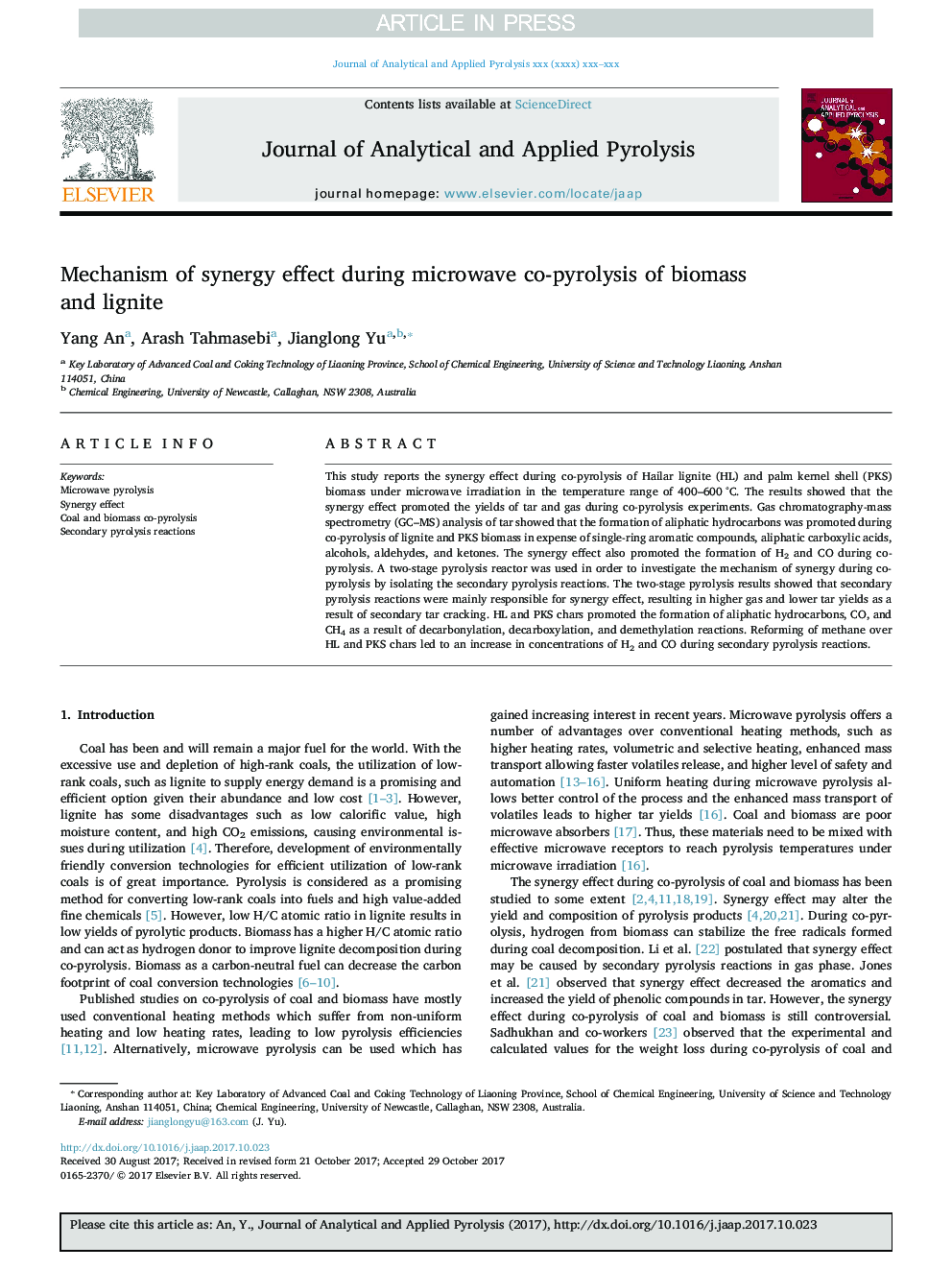| Article ID | Journal | Published Year | Pages | File Type |
|---|---|---|---|---|
| 7606430 | Journal of Analytical and Applied Pyrolysis | 2017 | 8 Pages |
Abstract
This study reports the synergy effect during co-pyrolysis of Hailar lignite (HL) and palm kernel shell (PKS) biomass under microwave irradiation in the temperature range of 400-600 °C. The results showed that the synergy effect promoted the yields of tar and gas during co-pyrolysis experiments. Gas chromatography-mass spectrometry (GC-MS) analysis of tar showed that the formation of aliphatic hydrocarbons was promoted during co-pyrolysis of lignite and PKS biomass in expense of single-ring aromatic compounds, aliphatic carboxylic acids, alcohols, aldehydes, and ketones. The synergy effect also promoted the formation of H2 and CO during co-pyrolysis. A two-stage pyrolysis reactor was used in order to investigate the mechanism of synergy during co-pyrolysis by isolating the secondary pyrolysis reactions. The two-stage pyrolysis results showed that secondary pyrolysis reactions were mainly responsible for synergy effect, resulting in higher gas and lower tar yields as a result of secondary tar cracking. HL and PKS chars promoted the formation of aliphatic hydrocarbons, CO, and CH4 as a result of decarbonylation, decarboxylation, and demethylation reactions. Reforming of methane over HL and PKS chars led to an increase in concentrations of H2 and CO during secondary pyrolysis reactions.
Keywords
Related Topics
Physical Sciences and Engineering
Chemistry
Analytical Chemistry
Authors
Yang An, Arash Tahmasebi, Jianglong Yu,
